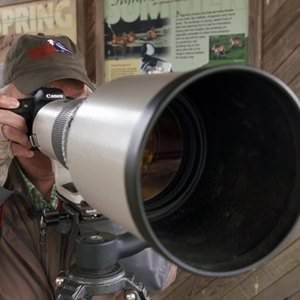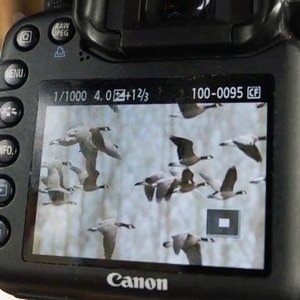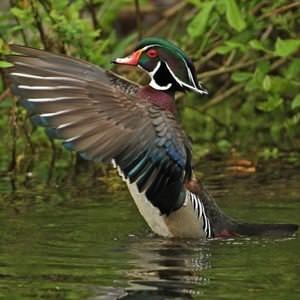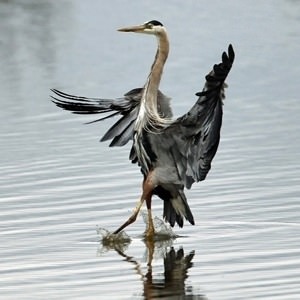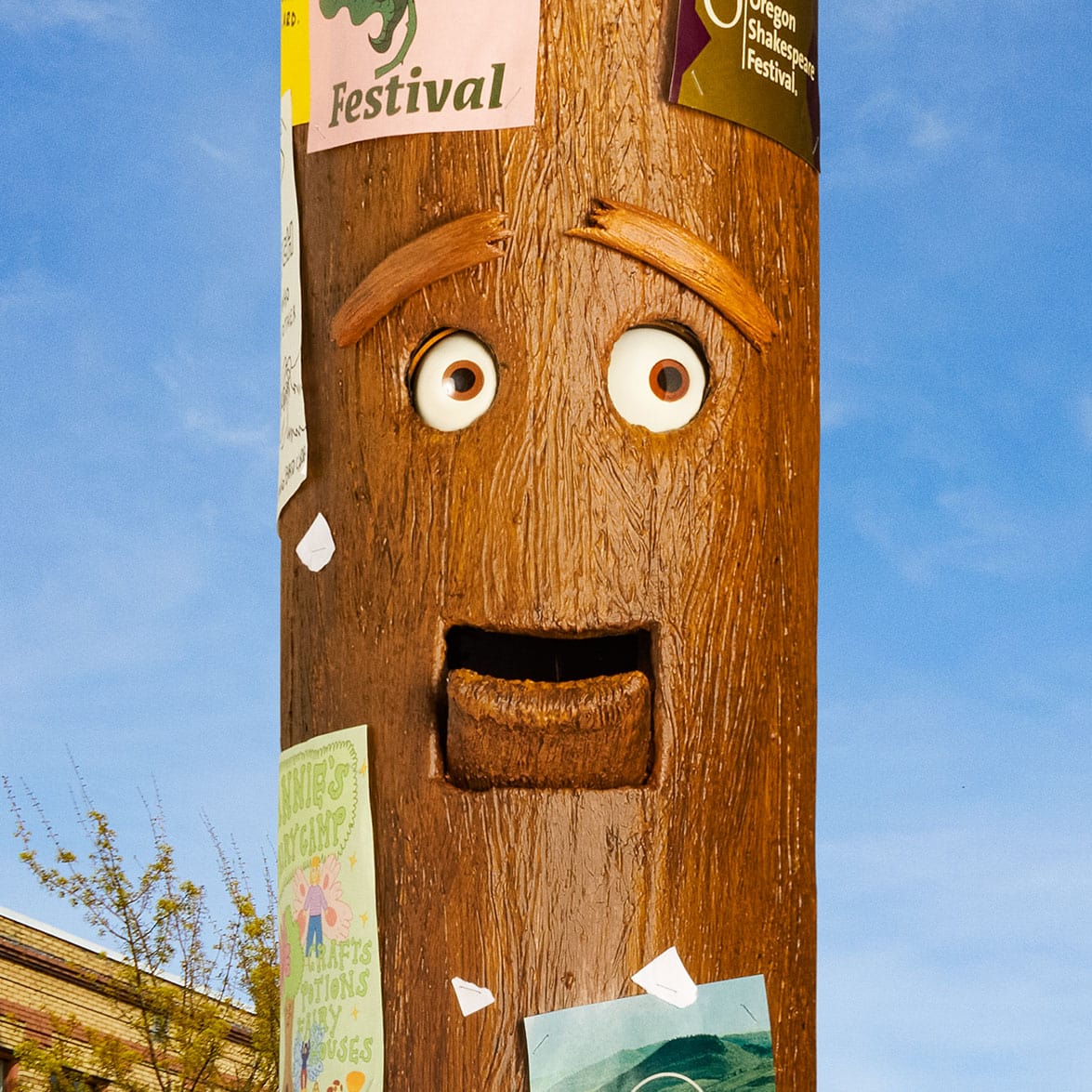A remarkable wildlife show is happening at the Ankeny National Wildlife Refuge. This Willamette Valley site is a birder’s paradise. Here, photographers can turn a fleeting moment into a work of art — and Jim Leonard has the images to prove it.
Leonard is a famed Oregon wildlife photographer who likes this wildlife refuge because it’s easy to reach from the highway, is just 15 minutes from his Salem home, and there are many hiking trails leading to wetlands or ponds to explore. Plus, the subject matter is aplenty. He says more than 200 species live at or pass through the Ankeny refuge every year.
His strategy is simple: “I have found that the more I sit in one spot, the more often varied wildlife comes to me because if you drive to an area and hop out of out of your vehicle, well, anything that’s close by will simply fly away.”
The Ankeny National Wildlife Refuge was established in the 1960s to keep wintering Canada geese here rather than neighboring private fields and also to protect a goose sub-species called “Dusky.”
Interestingly, Leonard says that nine years ago he didn’t know a robin from a ruddy duck. That is until he attended classes by the Salem Audubon Society. Then, he says, his world changed as he learned about all the birds that live in or migrate through western Oregon. Soon after he joined The Friends of Ankeny Refuge.
According to Leonard, his best photos capture wildlife in the great outdoors in some sort of action, “I do like the action shots; especially birds of prey — the raptors! The other day I got a dandy when I came across an immature eagle sitting on a tree branch, minding his own business when this mature bald eagle comes flying in and just attacked him. It’s talons were extended out and aiming right for the younger eagle’s head. The immature just fell off the branch backwards and took off as the mature eagle chased him out of his territory.”
Leonard is also a teacher for friends and newcomers who show up at the Ankeny refuge, especially on weekends, to endure the cold and wet for a chance to capture a wildlife moment.
His friends Ron Mulbery and George Crock agree the refuge is a real treasure that more folks should visit.
“I really enjoy photographing eagles and the shots of the eagles out here are just something special all the time,” says Mulberry. “One day our high count was 21 bald eagles roosting in nearby trees. That was remarkable.”
“I came out here one Thanksgiving Day with a pair of binoculars,” adds Cronk. “Oh my goodness, I was amazed at the waterfowl migration that was underway. After that, I started coming out here as often as I could. I was hooked.”
Leonard says most weekends there is quite a gathering of photographers, so much so that he’s “threatened to bring out a barbecue and cook up some hot dogs for everybody.”
The photographer freely offers tips to anyone who asks and says a tripod is a must for a steady shot.
Plus, nearly half of the 700 shots he takes each day are from inside his truck with a contoured rest that supports his 10-pound 600-mm lens.
“If you get out of your vehicle, everything may fly away; whereas if you stay in and shoot out of the vehicle, then you have a lot better luck,” Leonard insists.
His work has paid off with honors too. The famous and most recent Cornell University Ornithology Calendar features a stunning shot of a quail that Leonard captured not far from Ankeny.
Leonard says it’s the challenge of it all that he enjoys the most, “You kind of get a high, I guess, like when you catch the big fish or hit the good golf shot or something. As the seasons change you see so many different species — plus, you just never know what you’ll see next. I think it’s just the joy that comes from being outdoors.”
